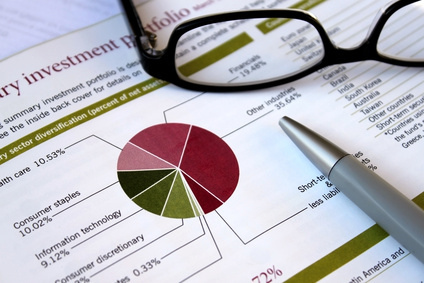Yale Bock, a portfolio manager on the Covestor marketplace, is a big fan of “The World According to GARP.” No, not the novel by John Irving but rather the investing concept of Growth at a Reasonable Price. Covestor recently caught up with Bock to discuss his growth-oriented investment style that focuses on fundamental analysis including cash ratios, liquidity ratios and margins. He manages the Concentrated GARP and Long Term GARP portfolios.
What’s your current market outlook? How do valuations look? Do you still see some sort of pullback and would that be welcome?
I don’t really like forecasting or giving a market outlook because it is really a fool’s errand as you cannot really win, which is why Warren Buffett in his recent shareholder letter talked about not paying too close attention to macro forecasts.libquest
Still, my general outlook is that the market will be frustrating for lots of investors. In my opinion, 2014 will be be a grind-it-out, 5-6% return year with plenty of volatility. The different indexes trade at moderate valuations of around 16 times earnings for the Dow Jones Industrial Average (DJIA), 19-20 for the S&P 500 Index (SPX) and higher for the Nasdaq (COMP). Obviously there are pockets of extremes with alternative energy, social networking and security at the higher end, and a variety of industries towards their lower range such as energy and some parts of health care.
Regarding pullbacks, in early March every day was a down day, coming off of several pretty strong weeks. Pullbacks are welcome if you can evaluate and know what you want to buy, own, or add to and are willing to add to positions which get cheaper.
What’s unique about your investment approach with your two GARP portfolios?
The two portfolios are focused on owning growth, finding it where it is priced inexpensively, along with owning companies with managements that have a history of being shareholder friendly. In conjunction with these themes is trying to own businesses which have unique and superior business models and are in intersections of an industry or in mandatory sectors like energy or health care.
They can grow organically, through acquisitions, by being opportunistic in stock buybacks, or by being creative with financial engineering or with seeding venture capital type investments. In sum, I think the GARP portfolios may be suited to people who are looking to be diversified with what I think is a pretty diligent approach.
What big economic or technological trends do you find most promising in the U.S. or abroad?
The biggest technology and economic trends I find most promising revolve around applying technology to energy and healthcare related industries. Certainly, the emergence of cloud computing and connected devices in the home, car, within factories, and around the environment should make the world more information-driven.
Industries like energy and healthcare are using technologies like sensors and connected devices to try and become more efficient with respect to margins. The oil and gas industry is very unique. For the foreseeable future, at least the next 20 years, in order to move by car, boat, plane, or train, the vast majority of fuel provided is going to be carbon based. Alternative energy sources currently make up less than 5% of fuel provided in transportation.
Oil and gas, whether people like it or not, is very much a sector where you can depend on its importance. In that light, the biggest integrated oil companies have a nice opportunity to become more efficient by applying technologies to their existing businesses.
Healthcare is around 15-20% of the economy, so the same principle holds. In my opinion, investors can have faith that health care related businesses are crucial and they also have the ability to become far more productive by applying technology to their supply chains.
What stocks in your portfolio are particularly promising and why. What stocks were really a disappointment?
Like a family where you love all your siblings the same, I am enthusiastic about all the holdings. The positions where I have the greatest allocations include Intuit (INTU), Iconix Brands (ICON), Liberty Interactive (LINTA) and Liberty Media (LMCA), IAC Interactive (IACI), BP (BP), Quest Diagnostics (DGX) and Starbucks (SBUX) in the Long Term GARP portfolio.
In my opinion, the market has kind of forgot about how good a company Quest Diagnostics is and usually what is unloved is where there is opportunity. You can say the same thing about BP.
In the Concentrated GARP, Corelogix (CLGX) and DigitalGlobe (DGI) make up the biggest weightings. As far as ones I find especially promising, I think you always have to pay attention to what John Malone and Liberty is doing and the same holds true for Barry Diller and IAC Interactive.
The most obvious disappointment is the pounding DigitalGlobe took after its most recent earnings report. When you get beat up by 25% to 30% in a day, it is tough. However, that is part of investing.
Are stocks as an asset class still worthy of investment? Do you think individual investors are finally regaining trust in stocks?
I think there are always opportunities in stocks and thoroughly enjoy the challenge of trying to find value in the market, in whatever form it may exist. As far as individuals regaining trust, it would depend on the investor’s training and background, but generally I think the public hates the volatility of stocks and might not quite get that owning stocks is owning a piece of a business.
Photo Credit: SalFalko
DISCLAIMER: The investments discussed are held in client accounts as of February 28, 2013. These investments may or may not be currently held in client accounts. The reader should not assume that any investments identified were or will be profitable or that any investment recommendations or investment decisions we make in the future will be profitable. Past performance is no guarantee of future results.



